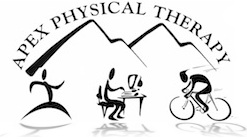Trigger Point Dry Needling

- What is trigger point dry needling (TDN)?
TDN involves multiple advances of a small needle into the muscle in the region of a “trigger point”. The aim of dry needling is to achieve a local twitch response to release muscle tension and pain. It is an effective treatment for acute or chronic pain with very few side effects. A healthy muscle feels very little discomfort with insertion of a needle. However, if the muscle has active trigger points, the individual will feel a sensation like a muscle cramp or possibly a reproduction of their pain. Sometimes it feels like a deep ache, or perhaps a burning sensation. This results in a deactiviation of the trigger point, reducing pain, improving mobility and restoring normal function to the involved muscle.
- What is a trigger point?
A myofascial trigger point is tender “knot” in the muscle tissue. These points are located in muscles throughout our bodies. When active, the trigger points cause referred pain. For example, a trigger point in the buttock can cause pain down the leg and may possibly be mistaken for sciatic pain. Trigger points can be perpetuated by the way you sit, the way you sleep, the way you lift, the way you run, a car accident, surgery, etc.
- What can i expect after a needling session?
It is normal to feel some muscle soreness for a day or two after needling, similar to soreness after exercise. It is helpful to apply heat to the area later in the day, to drink lots of water and take ibuprofen.
- What conditions are effectively treated with TDN?
- Tennis elbow/golfer’s elbow
- Rotator cuff injury/tendinitis
- Sciatica
- Low back pain
- Headaches
- Hamstring/groin strain or tears
- Thoracic outlet syndrome
- Carpal tunnel syndrome
- Shin splints
- Knee pain – patellofemoral syndrome, patellar tendinitis
- How is TDN different than acupuncture?
Acupuncture is based on restoring flow of energy (“chi”) in the body. With TDN, there in no intention of affecting these energy patterns. TDN is based on modern western scientific principles and working knowledge of anatomy and physiology. The muscles that harbor trigger points are needled. Research has shown that TDN improves blood flow to the affected area and increases chemcial substances that help to build normal tissue in the region.
- Does my insurance cover this TDN?
Yes! However, there is usually a small fee for needling supplies which insurance does not pay for.
